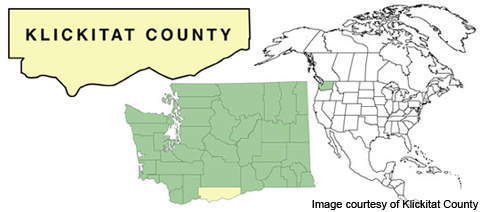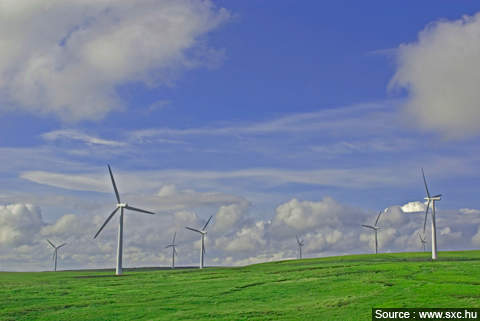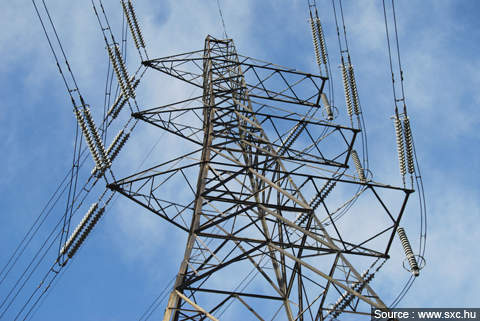Juniper Canyon is a 250MW wind farm under construction in Klickitat County, to the south-east of the city of Glendale, Washington. It is owned and operated by Pacific Wind Development, a wholly-owned subsidiary of Iberdrola Renewables.
The project is being developed in two phases named Juniper Canyon I and Juniper Canyon II.
Juniper Canyon I (Phase I) has an installed capacity of 150MW. It was commissioned in the final quarter of 2010. Juniper Canyon II (Phase II) is under environmental review. It will have an installed capacity of 100MW.
The wind farm will have a total of 128 wind turbines, 63 in Phase I and 65 in Phase II. It was one of the nine projects that received additional investment after the Recovery Act was passed in February 2009. Upon completion, it will provide clean and renewable energy to 75,000 homes in Klickitat County.
Development
The wind farm is being developed on 28,000 acres of private land spread across the Bickleton and Roosevelt regions. One of the portions is owned by the Washington State Department of Natural Resources.
Phase I received permission from Bonneville Power Administration (BPA) to interconnect the transmission lines into the Federal Columbia River Transmission System (FCRTS) in early 2010. At the same time, the Klickitat County also gave permission to lay the overhead lines over the energy overlay zone.
The wind turbines were manufactured by Mitsubishi and transported to the site by Anderson Trucking Services (ATS).
Distribution
BPA is purchasing the power produced by Juniper Canyon I. Power generated from phase I is being transmitted to BPA’s Rock Creek substation via 230kV transmission lines.
Hawkeye Construction, a subsidiary of MYR Group, and the subcontractor Air2 Helicopters were involved in the construction of 20.4 miles of transmission lines between the Phase I substation and the Rock Creek substation.
The construction and electrical connection works contract was awarded to Robinson Brothers Construction who in turn sub-contracted Parsons Electric for the installation of underground storage vaults for the cables and transformers.
To facilitate the interconnection, BPA expanded the existing Rock Creek Substation by 100ftx65ft. The extended area houses a new 230kV terminal which is connected to the new substation at Juniper Canyon I. BPA has also installed new metering and communications equipment at the Rock Creek and Juniper Canyon 1 substations.
BPA will construct a new substation at Wood Creek near Roosevelt County to provide interconnection services into the FCRTS system for Juniper Canyon II. The new substation will be spread over an area of three acres. BPA, however, does not plan to purchase power from Phase II of Juniper Canyon.
Construction
The Phase I turbines are laid along 12 miles of turbine strings in 12 segments. It involved construction of 19 miles of access roads and a 34.5kV substation in the area.
A 34.5kV collector cable system was constructed to link each turbine to the other and to the project substation. The system involved construction of six miles of overhead cables and the laying of underground lines for up to 19 miles.
An operations and maintenance facility has been constructed besides the project sub-station. It covers an area of 10 acres and is centrally located in the wind farm site.
Phase II turbines will be laid along 36 miles of turbine strings in 15 segments. It will involve the construction of 37 miles of access roads, a second sub-station, 15 miles of overhead collector and 29 miles of underground lines. Power transmission lines will be routed in southward direction to the existing BPA transmission lines.
Washington power market
Washington has few fossil fuel resources but is rich in renewable resources.
Electricity generation is dominated by hydroelectric power plants which account for more than 70% of the annual production. The rest is generated by coal and natural gas-fired and nuclear power plants.
As of January 2011, non-hydro electric renewable energy sources accounted for about 3% of Washington’s total electricity.
However, the adoption of renewable energy standards in 2006 has catapulted Washington into becoming a major producer of wind energy. It was ranked fifth in the US for wind capacity in 2008.
As per the standard, the city requires all the utilities serving more than 25,000 people to produce 15% of their energy from renewable sources by 2020.






